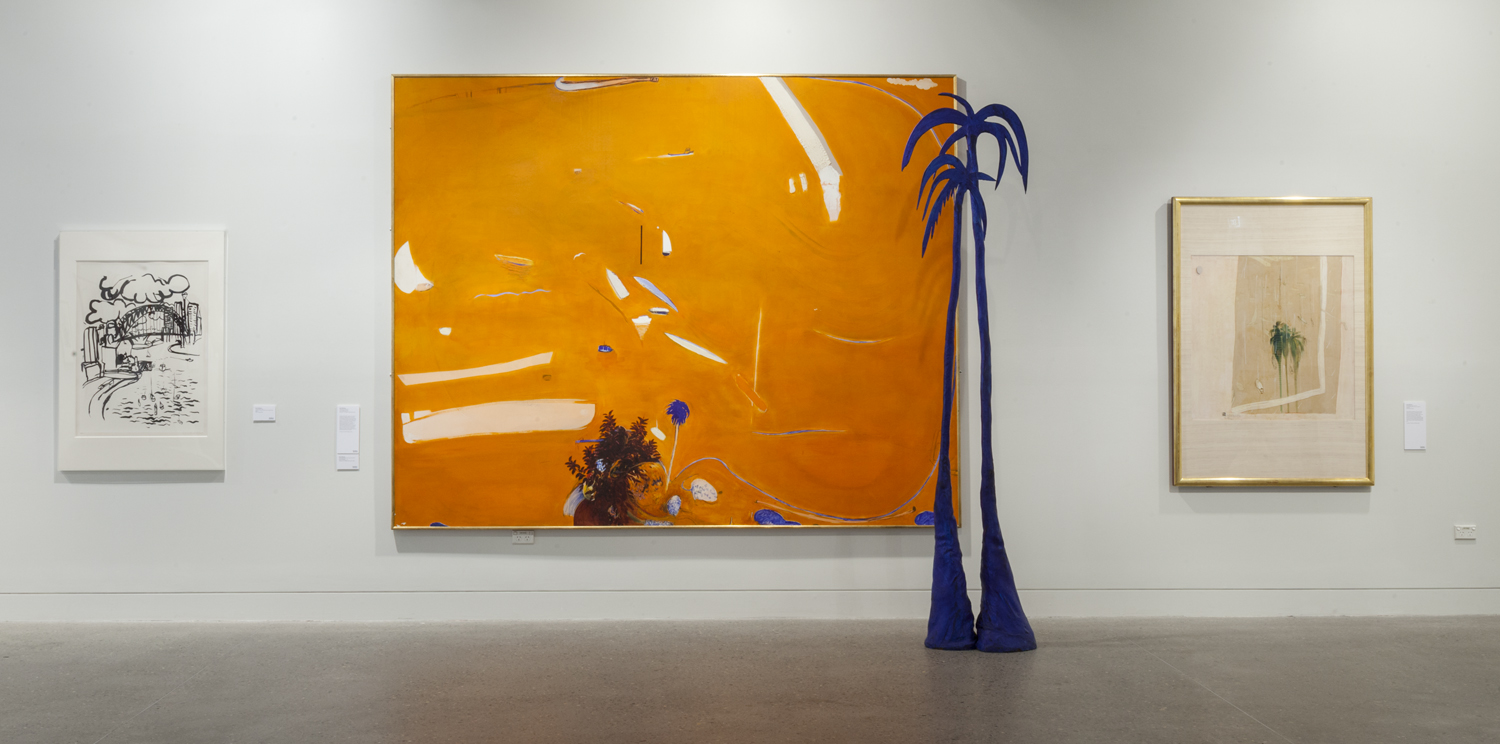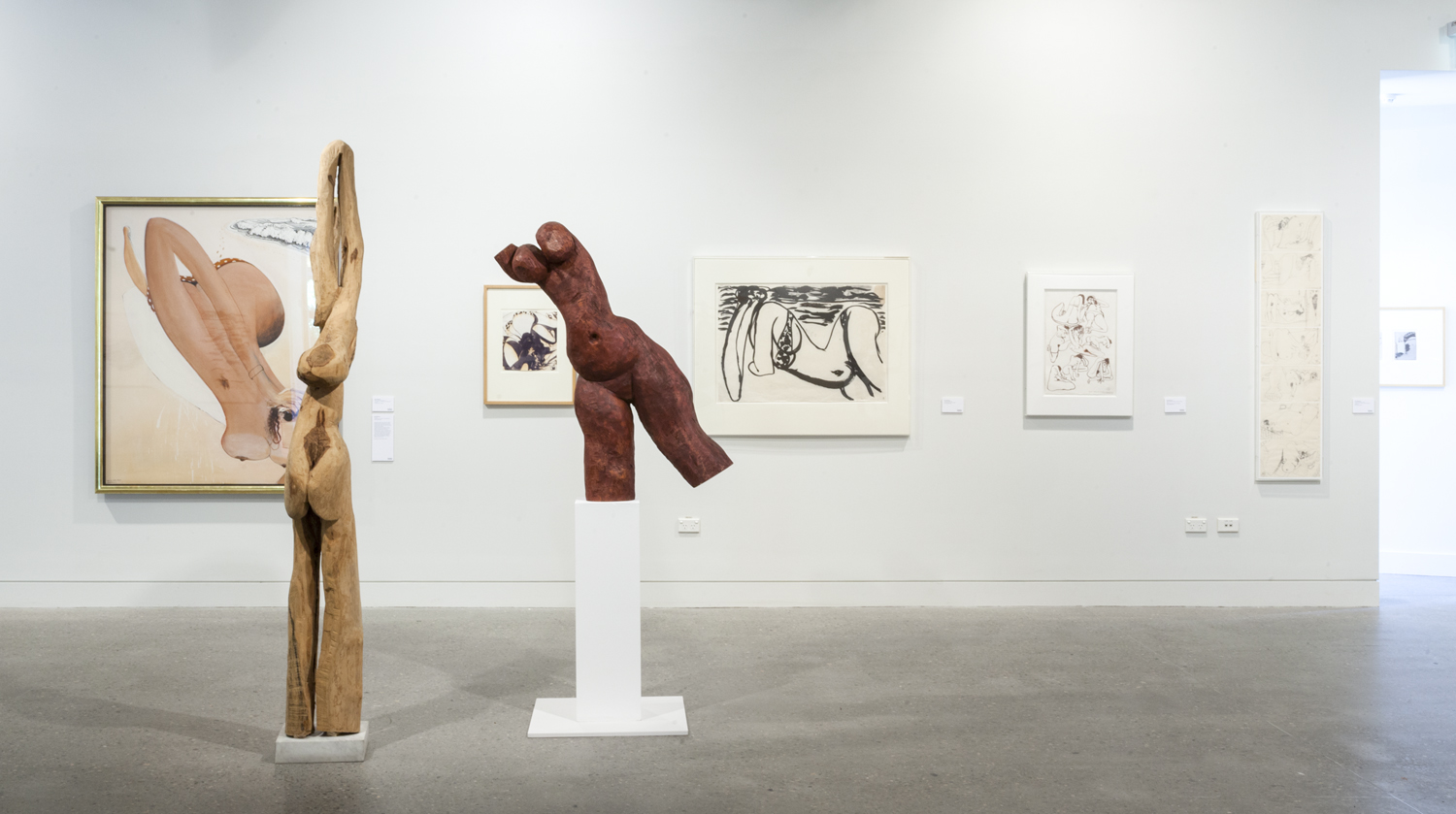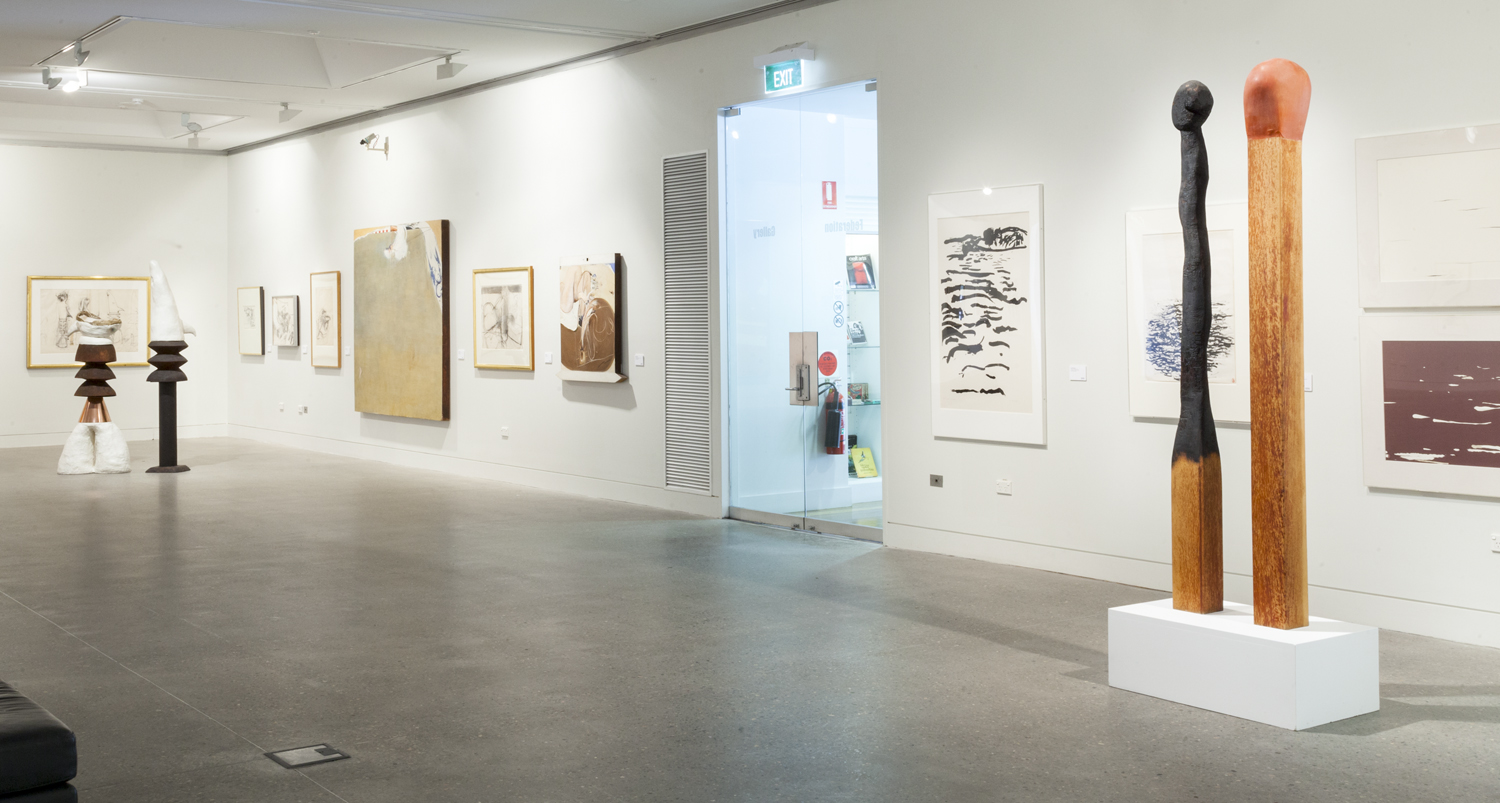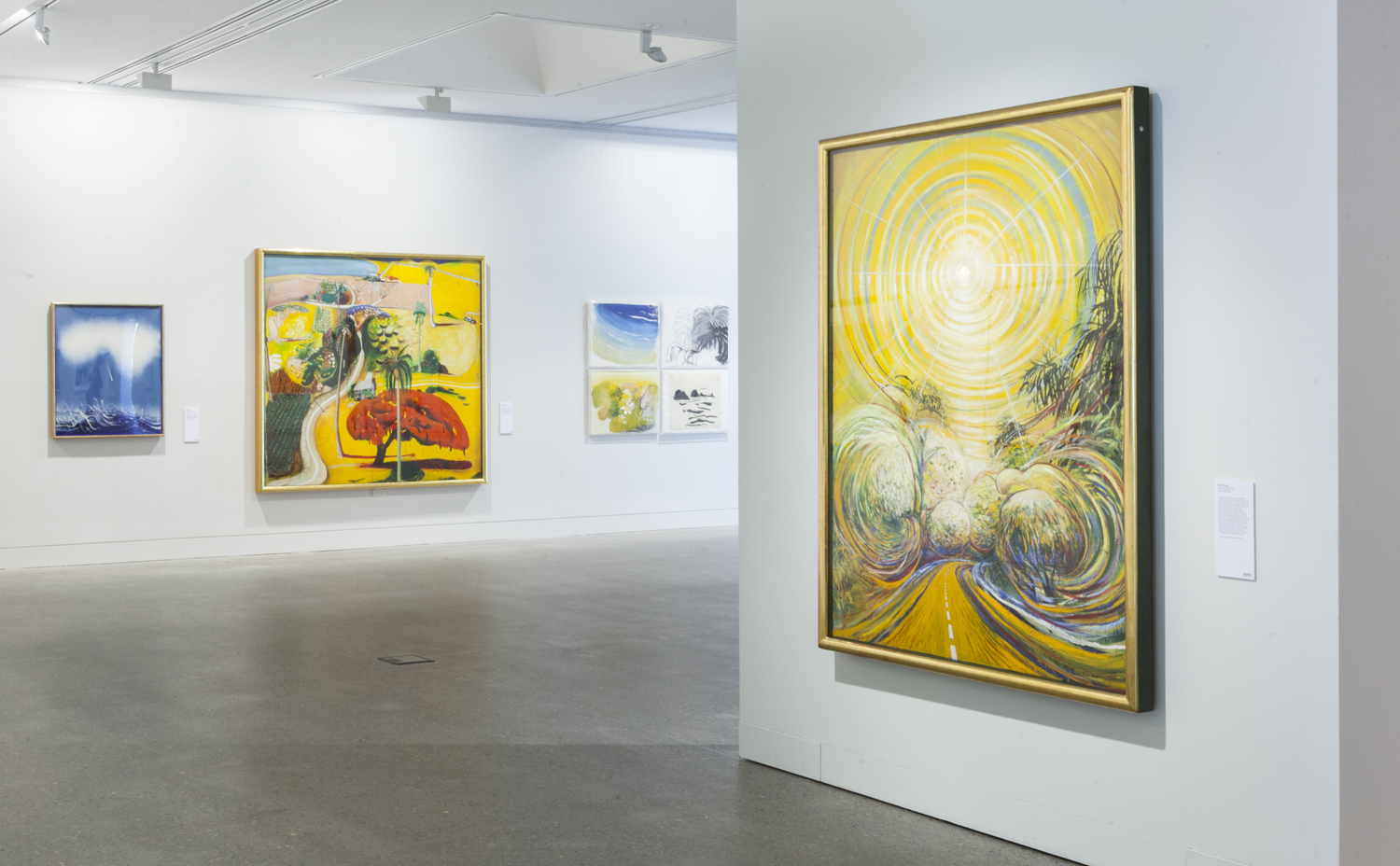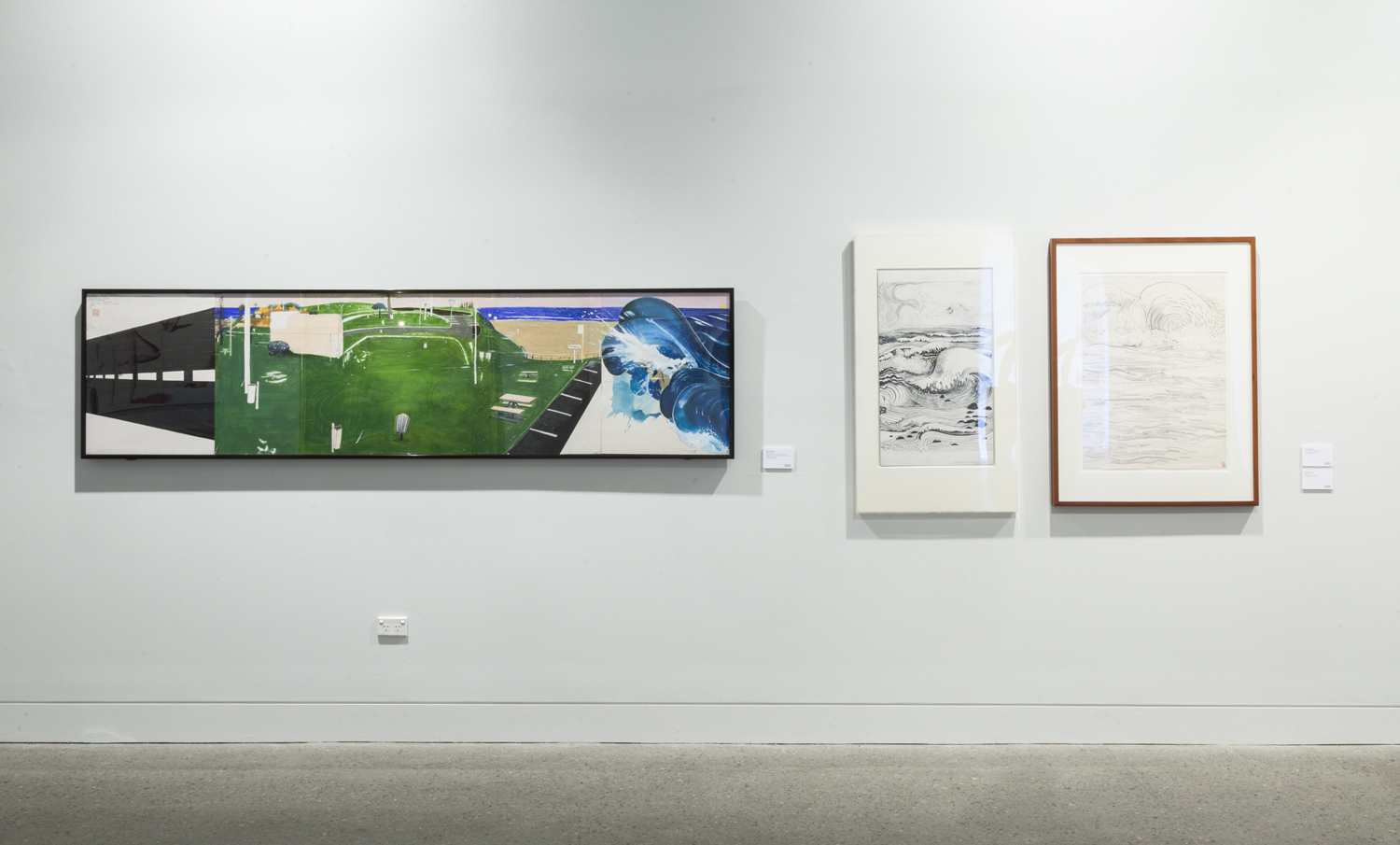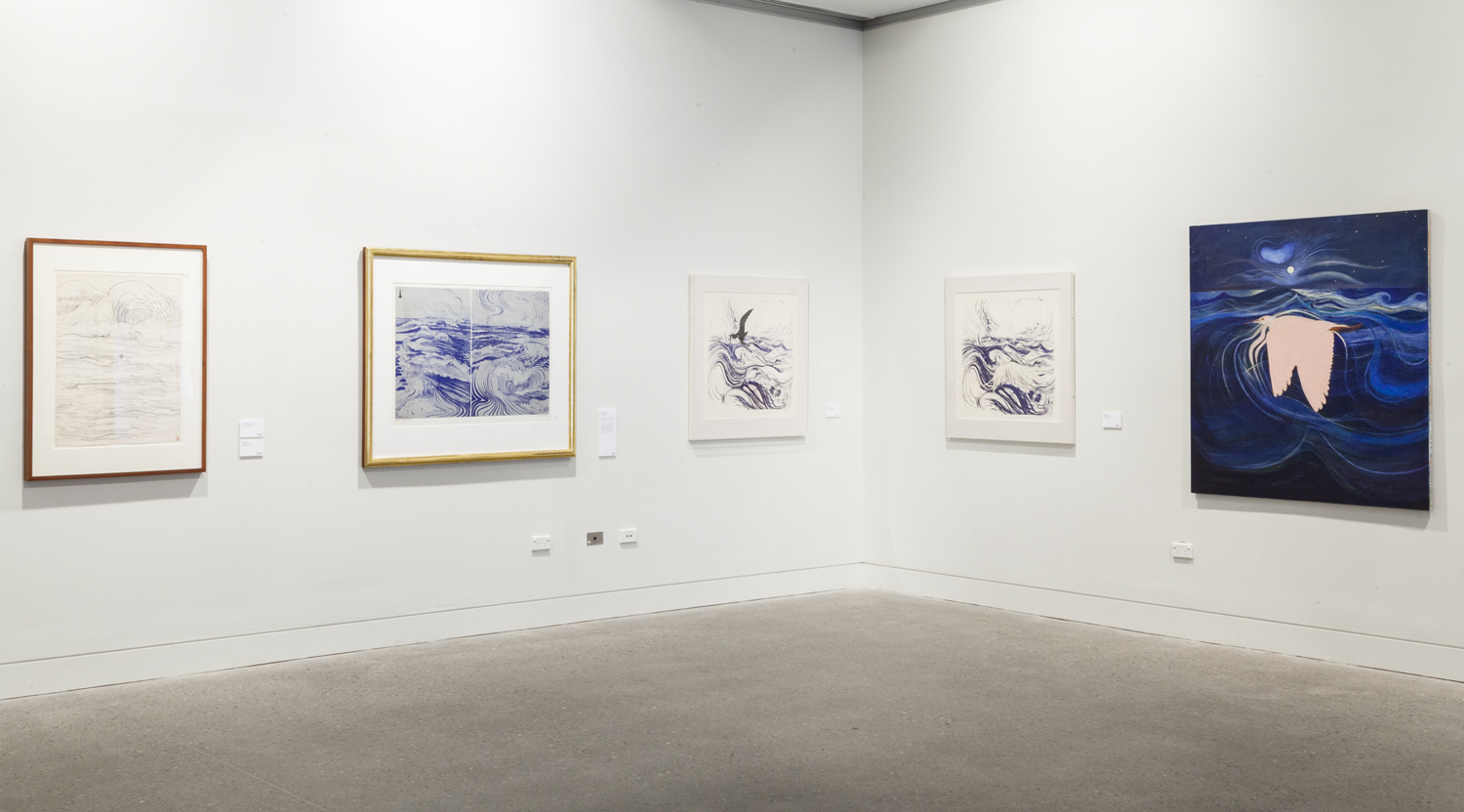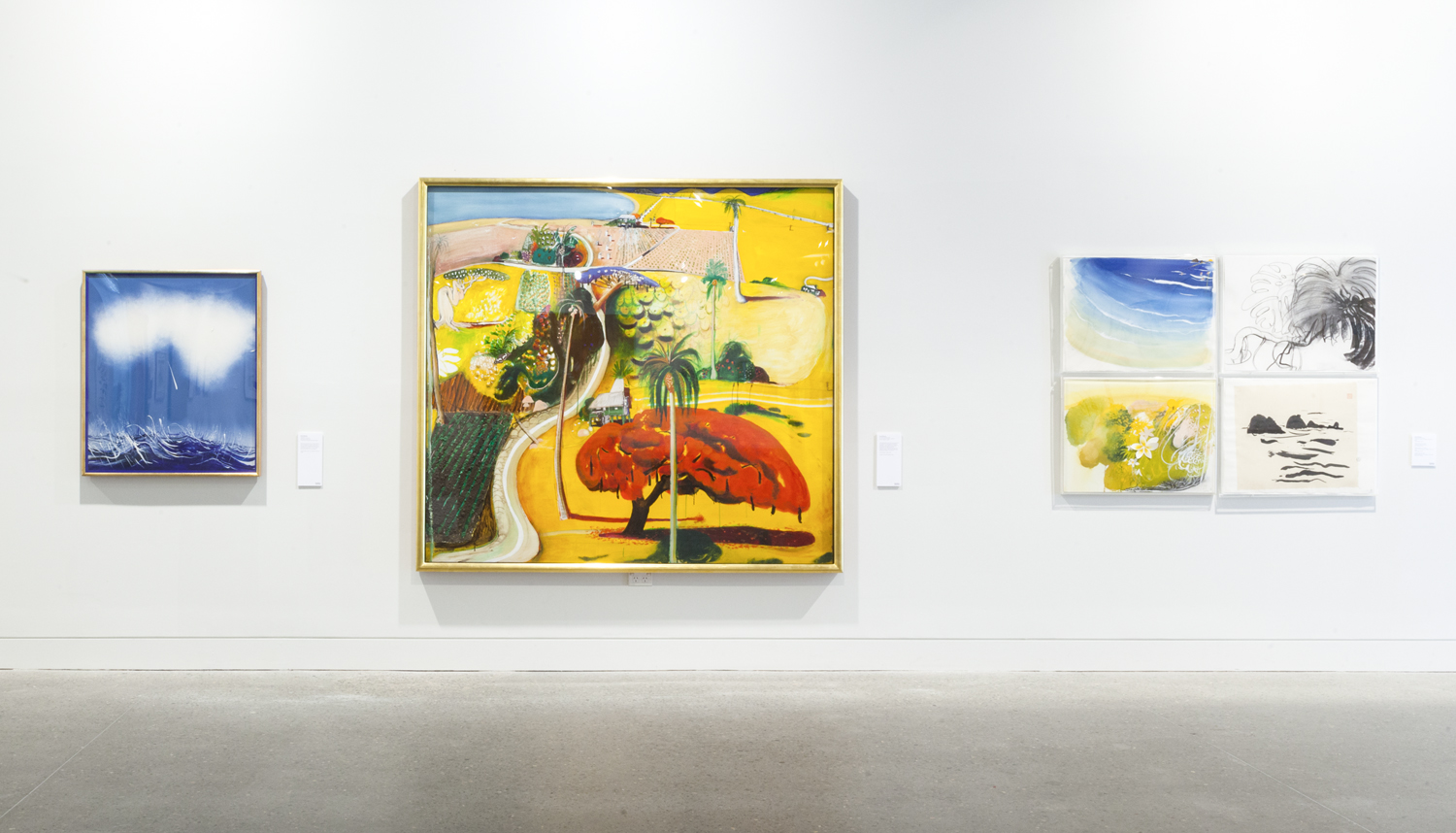15 November 2012 to 28 January 2013

Image: Brett Whiteley (Unfinished beach polyptych) (detail), pencil, charcoal, blue fibre-tipped pen, collage on six plywood panels, Brett Whiteley Studio © Wendy Whiteley.
Brett Whiteley had a prodigious career spanning four decades creating some of the most iconic images in Australian art. His lyrical and sensuous work attracted international acclaim and his work is held in major public and private collections across the world. The exhibition featured over 60 works including studies and etchings, photographs, sculptures of birds, sharks and bathers, and Unfinished Beach Polyptych: 6 imposing panels which left The Brett Whiteley Studio for the first time in 17 years.
Brett Whiteley was born in 1939 in Sydney, New South Wales, and grew up in the harbour side suburb of Longueville where along with visits to Boat Harbour he spent his childhood exploring coves and bays, observing birds and fish, gathering rocks, shells and eggs, establishing an admiration of nature in all its guises. By the age of seven had won his first art competition and during his prolific career would go on to win many more including in 1978 when he became the only Australian artist ever to claim the Archibald, Sulman and Wynne art prizes.
He attended Julian Ashton’s in Sydney during the late 1950’s and while working at the advertising agency Lintas won his first major prize, the Italian Travelling Scholarship awarded by Sir Russell Drysdale when he was just 20 years old. This enabled him to travel to Europe and satisfy his voracious visual appetite, experiencing the great masterpieces of art in museums and churches. He was one of the most luminous young talents and his early paintings startled critics and fellow artists, with his work acquired by the Tate Gallery when he was only 21.
It was on his return home in the summer of 1965-66 staying at Whale Beach that Whiteley found the perfect setting for his fascination with the nude and nature on the clean, dazzling beaches of Australia with its local birds and wildlife. He discovered the more expressive possibilities of the female nude, giving it a natural setting and recording the pleasures that its curves and contours brought to his draughtsman’s eye. The spectacle of Australians enjoying the sand and surf, and the bikini clad beauties provided Whiteley with endless muses as he explored the allure of these 'inherently erotic bodies [in] languid stupor'
Key works from this period such as The Beach II 1966 painting and studies, The Solution 1966 and Shark (male) and Shark (female)sculptures 1965 were featured in the exhibition. From this time on, nudes , principally inspired by his wife and muse Wendy appeared consistently in Whiteley’s work for the next three decades. His later works The Bather 1979 and After the Swim Tangier 1985-87 were included in the exhibition.
In 1969 Whiteley returned again to Sydney after a turbulent period in New York and found a new embrace of nature from his harbourside home in Lavender Bay which they bought in 1974. A quintessential painter of Sydney and the harbour Whiteley was totally seduced by the ultramarine of the water, its curves, rhythms and tranquility. Its large liquid presence was the perfect vehicle for Whiteley’s gift of composing works with large, empty spaces, and evoked in the artist the strong feeling that at last he had come home. Lavender Bay paintings included in the exhibition were Big Orange 1974, Grey Harbour c 1978 and Lavender Bay in the Rain 1978; totally flat picture planes without horizons and little pockets of nature distributed masterfully. These were paintings he described later as “soaking in perfume”.
Although addiction hovered like a shark ready to pull him under, Whiteley’s sensuous and occasionally humorous response to the rhythms of Sydney and its inhabitants resulted during the seventies and eighties in the creation of some of his most beloved works. Involved with The Yellow House artist's community his acclaim continued to grow and he was seen as one of the leading lights of the avant-garde art movement.
Whiteley exhibited at The World Expo in Washington in 1974, in 1976 he won his first Archibald Prize and the Sir John Sulman Prize; in 1977 and again in 1984 he won the Wynne Prize and in 1978 was the first and only artist to win all three prizes. In 1985 he purchased an old T-shirt factory in Surry Hills, Sydney and converted it into a studio which today is open to the public and presents a fascinating insight to his life and work, concentrating everything that made him so into one place. In 1991 he was awarded the Order of Australia (General Division).
Brett Whiteley died in 1992 at the age of 53, ending one of the most prodigious careers in the history of Australian art.
More information about the life and work of Brett Whiteley can be found at the Brett Whiteley Studio.
| Brett Whiteley: On the Water was presented by Hazelhurst in association with the Art Gallery of New South Wales and the Brett Whiteley Studio and included works from private and public collections. |
|---|

